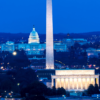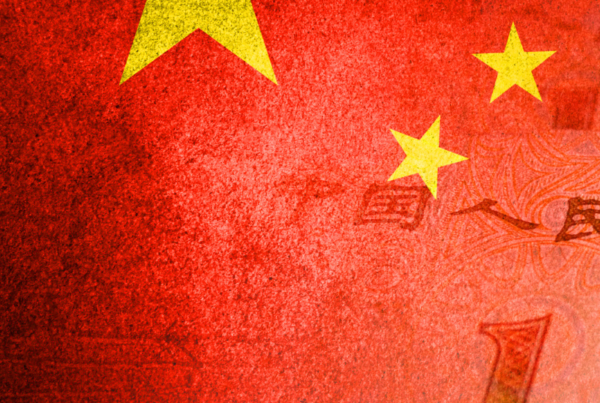KABUL, Afghanistan – Swerving through the stuffed streets of Kabul – saturated with the morning scent of diesel and fresh bread – shimmering mounds emerge in the early light as we move toward the Deh Sabz district. Those silver-tinted mounds are poured into trucks, brimming with Afghanistan’s increasingly prized possession: coal.
“Generally, in other countries, you will see they have to build tunnels to go underground or deep inside the mountain. But in Afghanistan, our coal is available right at the surface,” boasts Abdul Wahid, General Manager of a coal transport facility in Deh Sabz.
The war-recovering country is also said to have superior coal quality, which Abdul attributes to the unsullied, chemical-free quality of the soil. In terms of his privately-owned business, the coal comes direct from the provinces of Bamiyan and Samangan, is loaded onto trucks in Kabul, and is transported directly to its number one buyer: Pakistan.
Outside Abdul’s depleted office, workers with leathered faces and char-roughened hands pause a slanted steel shelter, squatting in the dust, waiting to fill the steady stream of colorful trucks bound for neighboring Pakistan.
“There is a big demand for coal now,” one high-ranking Talib in the Foreign Ministry, pointing out it is now being excavated in multiple other provinces, including Mazar-e-Sharif, Kunduz, Badakhshan and Jawzjan, enthuses during another meeting.
And as Abdul highlights, the war in Ukraine has only increased the demand as Russian halts oil exports resulting in increased interest from a range of international buyers amid Europe’s scramble to secure energy for the pending winter.
For the Emirate, it’s a win-win situation.

“Europe is facing a harsh winter,” Mufti Esmatullah Burhan, the Taliban spokesperson for the Ministry of Petroleum and Mines, echoes in a separate meeting. “And with that harsh winter, they need to find coal mines.”
He acknowledges, however, that no formal contracts have been signed with Europe.
But as Afghanistan struggles to rebound from its cash crisis and economic woes – due in large part to the U.S. and U.N sanctions imposed on Afghanistan’s banks following the crumbling of the western-backed government and return to power of the Taliban – the newfangled leadership is strikingly aware of the importance of raising quick revenue via the mostly untapped mining sector.
According to 2016 reviews by the Statistical Review of World Energy British Petroleum and the U.S. Energy Information Administration (EIA), Afghanistan sustains 73 million tons of proven coal reserves, with some four decades worth based on current consumption levels. The country’s coal mines extend from the Hindu Kush mountains in Badakhshan province to Herat by the Iranian border.
Yet it is debatable as to whether Afghans themselves are benefiting, or even hurting from, their own riches. Ascending Afghan coal exports to Pakistan have also induced a spike in domestic fuel prices and the demand for wood and coal.
Although the coal companies are Afghan-owned, Abdul tells me that only ten to fifteen percent of the coal remains in Afghanistan, with the rest going to Pakistan.
However, this is yet to become an inflammatory issue for Afghans – most of whom are endeavoring to make daily ends meet.
“People don’t care about the future, whether we should keep some for the country or not. That’s not a thing,” Abdul explains with a nonchalant shrug. “That mindset is not there. So as much as you can take out, take out.”
Sulaiman bin Shah, the former Deputy Commerce Minister under the former U.S-backed government, concurs that the coal revenues over the past year have been clocking up. In his view, a prominent factor is the ease of transportation since the Taliban returned to power. For the decades prior, road travel was a hugely dangerous venture due to heavy conflict and bomb-laden roads as the Emirate sought to brawl its way back to dominance.
“You don’t have to worry as much about security. And of course, Pakistan wants to import a lot given the energy crisis, (especially) with what is happening in Europe,” Solomon continues.
Afghanistan’s in-repair mining sector will likely serve as the core of the Taliban’s revenue stream, and the international struggle for ownership has just begun.
Along with coal, Afghans have long been aware of the abundance languishing beneath the earth’s surface – everything from copper, chromite, cobalt and gold to marble, iron, lithium, lapis lazuli and gemstones. A 2010 joint assessment by a Pentagon task force and the U.S. Geological Survey pegged the mining and mineral sector to be worth at least a trillion dollars. Because of the protracted war and weak security environment, little development took place despite the signing of a few large international contracts during the U.S.-led occupation.
The failure to launch, despite sweeping overtures of the former Islamic Republic’s Ministry of Mines to evolve the extensive reserves, was also due to systematic corruption across almost all government sectors. According to Foreign Policy, annual exports fell from $31 million in 2020 to just $3 million ahead of the unceremonious government collapse last August.
In contrast, Mufti estimates that the Taliban has already collected well into the tens of millions through mine exports.
“By the gift of God, Afghanistan is a country that has a lot of natural resources and mines. But unfortunately, in the last half-decade, the rest of the world has been advancing, and Afghanistan has been going backward,” Mufti conjectures. “Especially over the last twenty years, there was a lot of corruption and misuse of funds, and the mining ministry was no exception.”
Mufti rattles off a laundry list of examples, from companies winning tenders despite not submitting a proposal and local companies being blocked by warlords and leaders looking for an extra buck.
“The first thing the Emirate did was remove the power game. So, no more thieves and money are going into private accounts,” he claims. “Now we can use the money to build roads and other initiatives.”
Mufti adds that they accept bids from a diverse range of ethnicities.
“It can even be a Sikh person,” he says, referring to the primarily Indian Punjabi spiritual followers. “A Sikh is an infidel, but we treat everyone equally.”
I ask Abdul, who is not a Talib, how he perceives such a claim.
“Earlier in the Republic time, the district governors and other people in an area (with mines) would ask for bribes,” he says, noting that the only real change he has observed is that the Taliban has increased the tariffs but thus far have not engaged in the corruption that so profoundly soured and decimated the last government on virtually every level and industry.
I am initially perplexed by how the mining sector could function seamlessly, and Mufti explains that most employees (with their U.S-supported training) have returned to their old jobs. He says the Ministry has 2200 employees from the previous administration and just one hundred Taliban employees like himself.
“The top management is Emirate people. The other people are all from before,” he asserts. “If the top level is not corrupt, the lower people cannot be corrupt.”
He claims anyone suspected of maligned behavior is immediately arrested and jailed. Nevertheless, women are said to still receive their government paychecks but are not allowed to come to work.
“180 women were working here under the previous government; now they are servicing their husbands but taking salaries,” Mufti says, not missing an enthusiastic beat.
In times past, the mining industry was further punctured by the illegal-mining stratum, sometimes referred to under the euphemistic terms “informal” and “artisanal.” The lack of regulation made the process drastically unsafe with the haphazard blasting (I got caught up in this myself hiking in Nuristan and had to run for cover as the rocks crumpled over us), not to mention damaging existing goods.
Mufti vows that the illicit mining and smuggling business has been squashed.
One province awash with emeralds and other in-demand precious stones is Panjshir, a glittering cash cow that is not lost on the Taliban. Nasrullah Malikzada, the Emirate’s Director of Information and Culture, tells me that the development of the mining sector has not yet started in the province – which still endures skirmishes from a devoted crowd of resistance fighters – but will become a priority once “mission is accomplished” security-wise.
“We have mines, and they will be worked on. They are a national treasure,” he insists.
However, Mufti underscores (despite the frequent attacks initiated by ISIS-K terror operatives) that there are no more security problems in Afghanistan, and he has one hundred percent confidence in the Taliban’s capacity to safeguard the nation.
But despite the Emirate’s apparent openness to outside investors, lithium is one area where they play hardball.
A 2019 mining evaluation found that the bounty of Afghanistan’s unmined lithium, pertinent for everything from batteries and aircraft to prescription medications for mood disorders, is believed to be on par with Bolivia, which possesses the sixth largest reserves of the vital element. Lithium has been found in at least seven Afghan provinces, including Kabul, Helmand, Nuristan and Uruzgan.
“Every foreign country and company coming to us, their first demand is lithium,” Mufti points out. “But the minute we started our administration, the policy was to protect lithium. We don’t want to give it to any other country.”
It certainly appears that the Taliban is deeply aware that the global appeal for lithium, as the world continues to digitize, will only grow. Mufti also reminds me that Afghanistan has 1722 kinds of minerals.
What is also reiterated to me repeatedly by Taliban officials is its determination to procure economic relations and foreign investment with anyone willing to step into the fray. However, Mufti pledges that the tender mechanism is transparent, with listings published via their Twitter accounts, which are very active.
Oddly, in late September – despite the controversy surrounding women’s rights under the Taliban rule – the Procurement Department of the Ministry of Interior Affairs of the Islamic Emirate announced that an Afghan businesswoman, Dr. Azizah Afzali who runs the Nobahar Afzali Company, beat out several other private companies to win a critical coal procurement project for the central police departments of the Ministry of Interior.
While women are prohibited from physically working in a government position, there is no apparent restriction in the private domain.
“The ground is ready; now anyone who wants to come into Afghanistan can start,” Abdul emphasizes when I ask about the prospect of the Taliban’s once-enemy nations in the west investing in the post-conflict country.
But ultimately, the growth of the Islamic Emirate to take full advantage of the affluence beneath their feet depends on their ability to clinch diplomatic relations with the rest of the world, which remains clouded by a string of antiquated rulings, including halting girls’ secondary education in most provinces.
Still, in his parting words, Mufti declares that the Emirate is welcoming of all countries, even though many were “invaders and brutal too (us).” He highlights that all companies, domestic and foreign, are given an equal opportunity – but the condition for outsiders is that they must partner with an Afghan company for all mining projects.
“The beef we had with other countries, we have removed it,” he adds. “So now, every country can come.”











